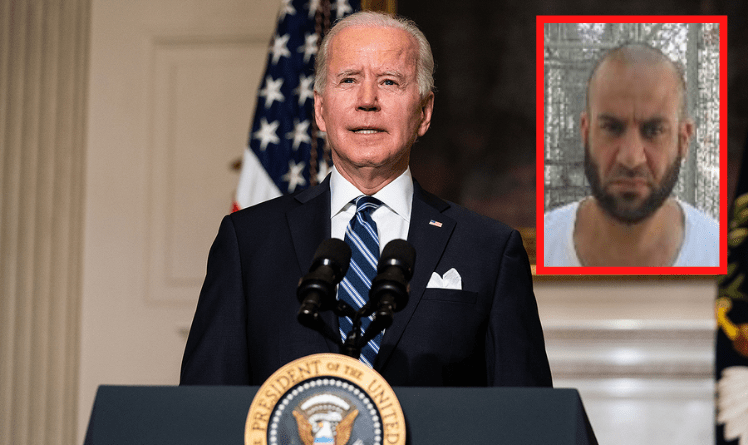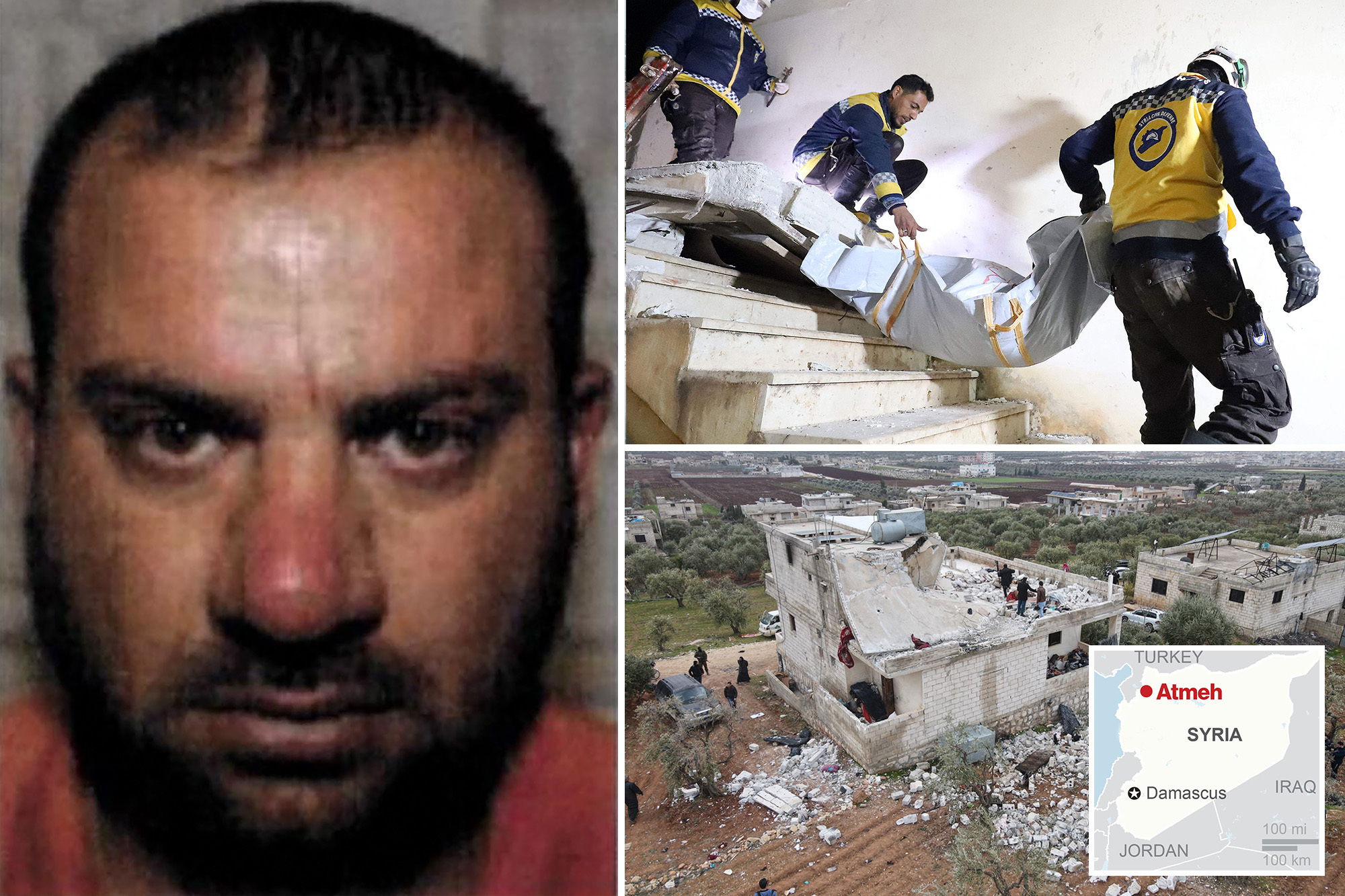Islamic State leader Abu Ibrahim al-Hashimi al-Qurayshi was killed during a U.S. counterterrorism operation in northwestern Syria on Wednesday night, President Joe Biden said in a statement.
“Last night at my direction, U.S. military forces in northwest Syria successfully undertook a counterterrorism operation to protect the American people and our allies, and make the world a safer place,” Biden said.
Qurayshi detonated a bomb that killed himself and members of his family, including women and children, at the beginning of the operation, according to a senior U.S. official.
The operation was conducted by special operations forces under the control of U.S. Central Command, Pentagon spokesman John Kirby said in a statement.
Qurayshi took over as leader of the terror organization after former leader Abu Bakr al-Baghdadi was killed in a U.S. raid in 2019. He oversaw the group’s attacks on the Yazidi religious minority in Iraq.
Though the influence of the group waned as Syrian and Iraqi forces — variously backed by the U.S. and its allies, as well as Iran and Russia — largely eliminated its territorial holdings in recent years, the group was never completely eradicated.
Biden is expected to address the nation about the mission at 9:30 a.m. ET from the White House in Washington, D.C.
According to a report, President Biden said on Thursday that the leader of the Islamic State died during a raid by U.S. Special Operations commandos in a risky pre-dawn attack in northwest Syria. Rescue workers said women and children were among at least 13 people killed during the raid.
In brief remarks at the White House, Mr. Biden said the choice to target the ISIS leader, Abu Ibrahim al-Hashimi al-Qurayshi, using the Special Forces was made to minimize civilian casualties, despite the greater risk to American troops.
Speaking in the Roosevelt Room at the White House, Mr. Biden was understated as he described the ISIS leader’s history, saying that he had ordered a series of atrocities, including against the Yazidi people. “Thanks to the bravery of our troops, this horrible terrorist leader is no more.”
He said the operation was a warning to terrorist groups.
“This operation is testament to America’s reach and capability to take out terrorist threats no matter where they try to hide anywhere in the world,” he said.
Mr. Biden said Mr. al-Qurayshi died when he exploded a bomb that killed him as well as members of his own family.
Before his White House remarks, Mr. Biden said in a statement, “All Americans have returned safely from the operation.”
The helicopter-borne assault carried out by about two dozen American commandos, backed by helicopter gunships, armed Reaper drones and attack jets, resembled the raid in October 2019 in which Abu Bakr al-Baghdadi, the previous leader of the Islamic State, died when he detonated a suicide vest as U.S. forces raided a hide-out not far from where Thursday’s operation took place.
The airborne raid came days after the end of the largest U.S. combat involvement with the Islamic State since the end of the jihadists’ so-called caliphate three years ago. American forces backed a Kurdish-led militia in northeastern Syria as it fought for more than a week to oust Islamic State fighters from a prison they had occupied in the city of Hasaka.
Little is known about Mr. al-Qurayshi, who succeeded Mr. al-Baghdadi, or ISIS’s top command structure. But analysts said the death of the Islamic State leader was a significant blow to the terrorist group.
American helicopters ferried the commandos into position after midnight, surrounding a house in Atmeh, a town close to the border with Turkey in rebel-held Idlib Province, according to eyewitnesses, social media reports and the Syrian Observatory for Human Rights, a conflict monitor based in Britain.
A tense standoff briefly ensued, with loudspeakers blaring warnings in Arabic for everyone in the house to surrender, neighbors said. Then an explosion rocked the building. After that, some of the house’s occupants had not emerged and a major battle erupted, with heavy machine gun fire and apparent missile strikes.
During the operation, one of the American helicopters suffered a mechanical problem, was forced to land and was later destroyed by American attack aircraft. After about three hours, the American commandos and their remaining helicopters flew off, witnesses said.
Given the fluid nature of early reports in a complex raid like Thursday’s operation, the military’s initial version may be incomplete. Accounts of other events have at times turned out to be contradictory or sometimes flat wrong.
Who was Abu Ibrahim al-Hashemi al-Qurayshi?
The head of Islamic State, Abu Ibrahim al-Hashemi al-Qurayshi, died as he lived most of his life: off the grid in the jihadist underworld.
Little is known about the ISIS leader, whose real name is Amir Muhammad Said Abdel-Rahman al-Mawla, or other members of the group’s senior command. But his death in a raid by U.S. commandos in Syria on Thursday was a significant blow to the terror group and a victory for U.S. counterterrorism efforts.
While he was nowhere near as prominent as his predecessor, Abu Bakr al-Baghdadi, who died in a similar U.S. operation in 2019, “Mr. Qurayshi still commands a lot of respect within jihadi circles and is known to be highly intelligent and able to think strategically, said Colin P. Clarke, a counterterrorism analyst at the Soufan Group, a security consulting firm based in New York.
Mr. Clarke said that Mr. al-Qurayshi had kept a low profile, which helped him elude an American-led manhunt but also may have hampered his ability to expand the Islamic State’s global network and brand. In March 2019, ISIS lost the last piece of territory from its so-called caliphate in parts of Syria and Iraq.
“The trade-off has been, he’s a ghost, and not exactly active to inspire jihadist recruits,” Mr. Clarke said.
“The next ISIS leader could be someone relatively unknown, which will present the U.S. and its allies with a challenge in terms of intelligence collection and mapping his network. But it’s also a challenge for ISIS, particularly if the next leader is not someone with a reputation on par with previous jihadist leaders.”
Mr. al-Qurayshi, who was 45 and born in Iraq, was named the head of ISIS after Mr. al-Baghdadi died in October 2019 in similar circumstances: detonating a suicide vest as U.S. forces raided his hide-out in Syria’s Idlib Province. Once he took up that mantle, the United States put a bounty of up to $10 million on his head.
The U.S. government said he “helped drive and justify the abduction, slaughter, and trafficking of the Yazidi religious minority in northwest Iraq and also led some of the group’s global terrorist operations.”
He was captured by U.S. forces in Iraq in early 2008. The date of his release is not known. While in American custody, he appeared cooperative in interrogations and even provided information about other ISIS operatives, according to interrogation reports that were later made public.
A day after his capture, the U.S. military’s Central Command said that operations in Mosul, Iraq, had resulted in the capture of “a wanted individual believed to be the deputy Al Qaeda in Iraq leader for the network operating in the city.” It said the man had “previously served as a judge of an illegal court system involved in ordering and approving abductions and executions.”
Earlier, Mr. al-Qurayshi had served briefly in the Iraqi military before the fall of Saddam Hussein and completed a Master’s degree in Islamic Studies at the University of Mosul in January 2007. He told interrogators he joined the Islamic State in Iraq soon after that.














